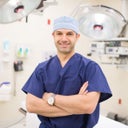Posted underRhinoplasty q&a
Asymmetry and alar retraction - What is the least invasive procedure to fix issues and make it aesthetically pleasing? (Photos)
Female, 39, primary rhinoplasty in 2021. Now I am concerned with alar retraction, asymmetry and columelar over projection. Is the asymmetry very noticeable? What is the least invasive procedure I can do to fix issues and make it more aesthetically pleasing?
Answers (11)
From board-certified doctors and trusted medical professionals
Dr. Eric M. Joseph, MD

Dr. Eric M. Joseph, MD
Board Certified Facial Plastic Surgeon
Answer
Dr. Ramin Behmand, MD, FACS

Dr. Ramin Behmand, MD, FACS
Board Certified Plastic Surgeon
Answer
Dr. Kyle Kimura, MD

Dr. Kyle Kimura, MD
Board Certified Facial Plastic Surgeon
Answer
Dr. Andrew Miller, MD

Dr. Andrew Miller, MD
Board Certified Facial Plastic Surgeon
Answer
Answered on Jun 13, 2025
Answer
Dr. Richard G. Reish, MD, FACS

Dr. Richard G. Reish, MD, FACS
Board Certified Plastic Surgeon
Answer
Dr. Philip Michael, MBBCh, FRACS, FRCS(Ed)

Dr. Philip Michael, MBBCh, FRACS, FRCS(Ed)
Specialist Otolaryngologist
Answer
Dr. Darryl J. Blinski, MD
Dr. Darryl J. Blinski, MD
Board Certified Plastic Surgeon
Answer
More Rhinoplasty Questions
See all Rhinoplasty Q&AWE SEND PRETTY
EMAILS
What’s trending? Who’s turning heads? Which TikTok myths need busting? We’ve got you. No fluff, no gatekeeping—just real talk. Get our free, unfiltered newsletter.

